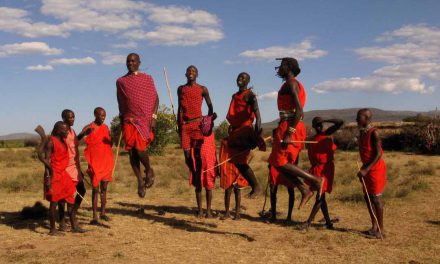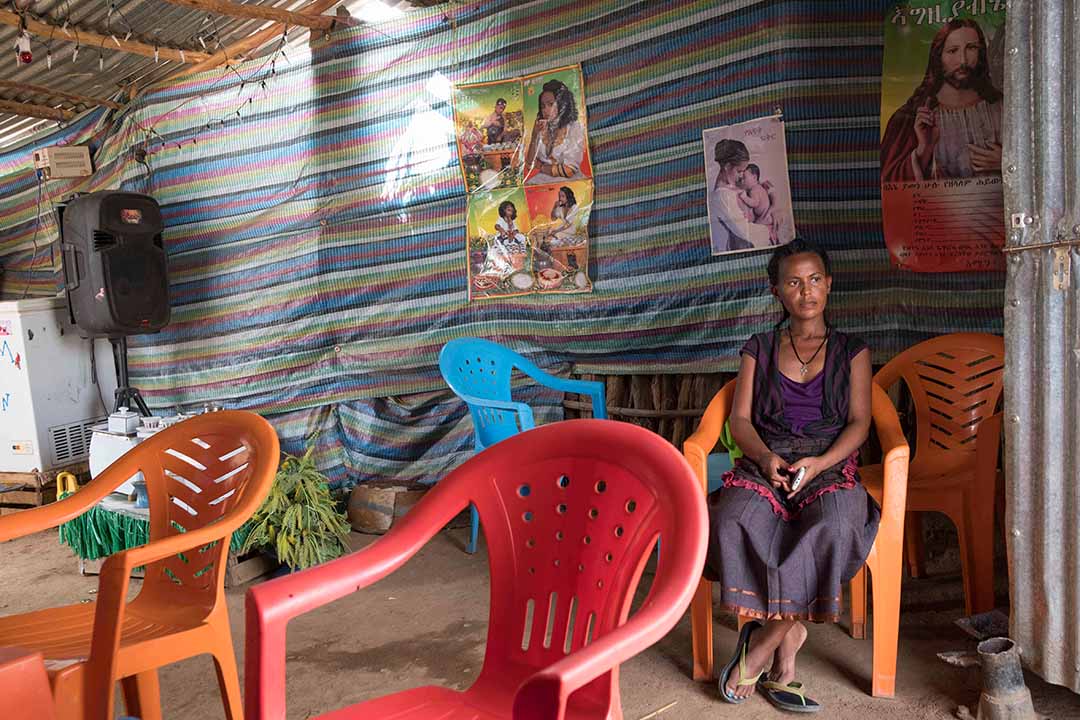What started as a single COVID-19 case has caused a contraction of about 2% in GDP in sub-Saharan Africa. As of 2020, the African Development Bank (AfDB) estimated that Africa would need at least $500 billion to rebuild economies. The pandemic caused massive economic setbacks and strained the continent’s ability to enhance development. Some countries were already financially strained in their ability to effectively implement COVID-19 measures and create stimulus packages, forcing them to redirect finances to COVID-19 responses.
Despite the risk of recession, African countries are making efforts to ensure socio-economic gains. The greatest challenge the continent faces is finding a balance between increasing consumption for the socio wellbeing of people while ensuring that the transition towards a low-carbon economy is equitable. It is, therefore, important that these are accompanied by sustainable growth and less reliance on carbon-heavy industries.
It is widely accepted that the impacts of climate change are more pronounced in Africa due to exposure to climate-related risks such as droughts and floods, and the lack of financial resources to adapt. Even though Africa contributes less than 4% of global emissions, temperatures on the continent are seemingly increasing at twice the global rate. Environmental disasters threaten the development of the continent and increase economic costs. So it is important that Africa begins unlocking green financing to transition beyond carbon-heavy industries to a low carbon economy.
For sustainable growth, and for Africa to catalyse the transition to a green economy, countries need to re-examine their fiscal and economic policies. The post-COVID-19 recovery plan should feature efforts that will employ green financing mechanisms. While higher debt levels and lower export revenue will make it difficult for African countries to finance a green economy, several financing mechanisms can be explored to assist with the transition to cleaner energy. Green financing has become more relevant and has been top of the agenda for many international conventions such as the COP conferences and G20/G7 summits.
The Climate Change Conference (COP26), hosted last year in Glasgow, highlighted a greater need for African countries to find their own solutions towards a green transition. Rich countries have failed to deliver on their 2009, $100 billion commitment to developing countries to help them mitigate and adapt to the effects of climate change, and to address some of the pressing issues presented at the COP26 conference.

People take part in a protest for climate action as part of a global climate action day in Abuja, Nigeria on 20 September 2019. Photo: Kola Sulaimon/AFP
It is therefore in Africa’s best interests to actively pursue different financing sources that will foster a sustainable green economy. While Africa is seeking $700 billion from developed countries every year from 2025 to speed up decarbonisation, this is only a fraction of what is required, and the continent needs to forge its own way as climate justice will not be the key to getting financial assistance. Africa cannot wait for Egypt (COP27) in November this year to start thinking of solo solutions to the problems at hand.
The OECD’s Official Development Assistance (ODA) has been one of the most important sources of financing, but it has been unable to keep up with the growing financial needs of developing countries. African countries, therefore, need to diversify their sources of funds to meet the net-zero target without solely relying on international assistance.
Environmental funds or green funds (EFs) are seemingly beginning to be seen as an important step in the implementation of national environmental strategies and achieving sustainable finance. EFs, also known as Conversation Trust Funds, are a sustainable finance mechanism used to leverage additional resources. Although developing countries have been creating EFs for years as part of their national action plans, there have been very few in Africa.
The nature of EFs differs with every country depending on the intended purpose. This means understanding the mission of the EF and its main priorities to ensure its success. The first step would be for respective governments to provide capital and add representatives from various sectors within society to promote transparency and due diligence. Governments needs to provide comprehensive frameworks that will attract private and donor investments. This will increase support for blended finance (private, public, and philanthropic funding).
Even though the successes and/or failures have been difficult to ascertain, EFs are considered effective in fostering private-public collaboration. The World Bank estimates that sub-Saharan Africa will need $93 billion in infrastructure costs. Given the funding gap and insufficient donors, private investment will factor in as an important stakeholder. This presents a great opportunity for governments to foster public-private partnerships, which will help improve services while also sharing responsibilities and, most importantly, bridging the finance gap.
While some of the strongest criticisms of EFs are that they increase administrative costs and offer less control for the allocation of resources, African states could use these challenges as lessons. In doing so, African countries can also look at EFs beyond their role as a financial instrument, but also consider them as an important tool in building institutional capacity.
Climate finance comes from a diverse pool of sources. Green bonds, as an example, are an important financial innovation in support of a green economic recovery. Green bonds are defined as the proceeds of debt that are used in environmentally friendly projects and were first pioneered by the World Bank in 2008. They have the potential for growth, and evidence suggests that they can contribute to the achievement of the Paris Agreement and Sustainable Development Goals (SDGs).
With this in mind, African issuers need to develop a green bond framework (GBF) that will assist in raising large amounts of sustainable funds for environmental and renewable energy projects, while also ensuring that companies avoid greenwashing. This financial instrument will attract a diverse range of domestic and international investors who are focused on going green. The market for green bonds has increased from less than $50 billion in 2014 to more than $270 billion in 2020.
Africa’s green bond market remains relatively small. South Africa, however, has attracted a great deal of attention with the cities of Cape Town and Johannesburg’s green bonds. The proceeds of these are used for local climate change mitigation and green projects. Similar methods can be employed by other countries to attract investments.

Some 700 people from different climate justice movements gather in the Johannesburg CBD, on November 28, 2015, to protest against rising global temperatures and the threat to the livelihoods of the poor. Photo: Mujahid Safodien/AFP
Launched in 2017, the Johannesburg Stock Exchange (JSE) green bond is an example of how the model is gaining traction in South Africa. The proceeds received from investments are exclusively used to finance or refinance new and existing green projects. Another example is Nedbank, which is becoming the first South African bank to issue a renewable energy bond, investing the proceeds in renewable energy projects such as solar and wind power. This shows that financial institutions are recognising the responsibility of integrating environmental dimensions into their operational activities.
What is important is that financial institutions can translate a nation’s climate ambitions as part of their Environmental, Social, and Governance (ESG) framework when assessing the companies they own and the clients they lend to. It is important to note that investors are increasingly becoming interested in green projects, so the financial sector itself needs to encourage that interest.
A carbon tax is the newest response to climate change for most countries. While the main goal of a carbon tax is to reduce greenhouse gases by holding emitters accountable through a tax act, it is also a sustainable finance mechanism. For Africa, the tax will not only help control emissions but, if planned carefully, will support the growth of a green economy by using the tax money towards the development of clean energies.
As with any tax, it will also be useful in boosting domestic resources. Important to this is for African governments to be efficient in the management of tax revenue and improve governance. To attract finance, it is important to enhance transparency and address weak governance and build capacity. Most African countries battle corruption and introducing a new tax will be met with reluctance. Governments must strengthen justice systems and create an environment that will hold people accountable.
Africa’s green recovery plan should not be one without a renewable energy revolution. The continent has unlimited potential for solar capacity, hydropower, wind, and geothermal sources. According to an estimate by the International Renewable Energy Agency (IRENA) during COP24 in 2018, Africa’s renewable energy could reach 310 GW by 2030, putting it at the forefront of renewable energy generation.
Governments can use this opportunity as a building block in economic recovery. If Africa does not tap into these renewable development benefits, it could deepen the inequalities between developed and developing countries. It is therefore important that developed countries come up with plausible financial solutions that are more beneficial than coal investment. In doing so, countries should implement regulations and legislation that will create an environment that fosters climate investments.
Developed countries also need to encourage incentives that can, in turn, encourage Africa to move towards renewable energy. One of the main drivers of fossil fuel operations is the unabated investment and funding of this sector from developed countries and China.
Diverting funds to climate deals and green activities will be effective towards the transition to a green economy. The African Development Bank (AfDB) has been active in garnering climate finance. According to the AfDB, it has managed to increase its contributions towards climate-related investments from 9% in 2016 to 28% in 2017 and 32% in 2018. As part of its 2020-2025 vision, the bank has pledged to mobilise $25 billion and launch a green baseload initiative that will provide finance to support renewable energy. Countries must draft comprehensive and strong national policy actions to attract funding from the AfDB and other development banks.
While there is a growing appetite for green investments on the continent, the success of any of these finance sources requires political will. An increase in climate consciousness among political leaders will help to accelerate the mobilisation of finance. At the same time, it is also important that African countries initiate or plan on how they will re-skill workers in heavy carbon industries. Upskilling workers and preparing them for other jobs is an important aspect of achieving an inclusive transition. While some mechanisms have been identified, it is imperative that governments step up their efforts to mobilise finances.
Would you like to gain an understanding of your own impact on the environment? Calculate your own carbon footprint here
Leleti Maluleke is a Researcher for our Human Security and Climate Change programme. She completed her Bachelor of Political Science in Political Studies in 2017, and her Honours in International Relations in 2018 at the University of Pretoria. She started her career at International SOS in the Security Services department as a Political Risk and Security Intern. Socially, her countries of interests include Mozambique, Zimbabwe, Zambia and Malawi.












